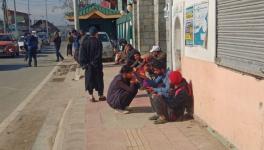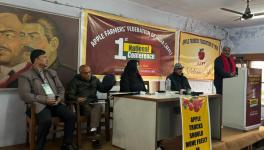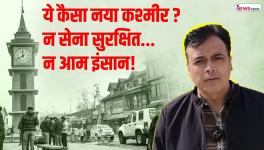Embracing Art: A Rebel Against Traditions
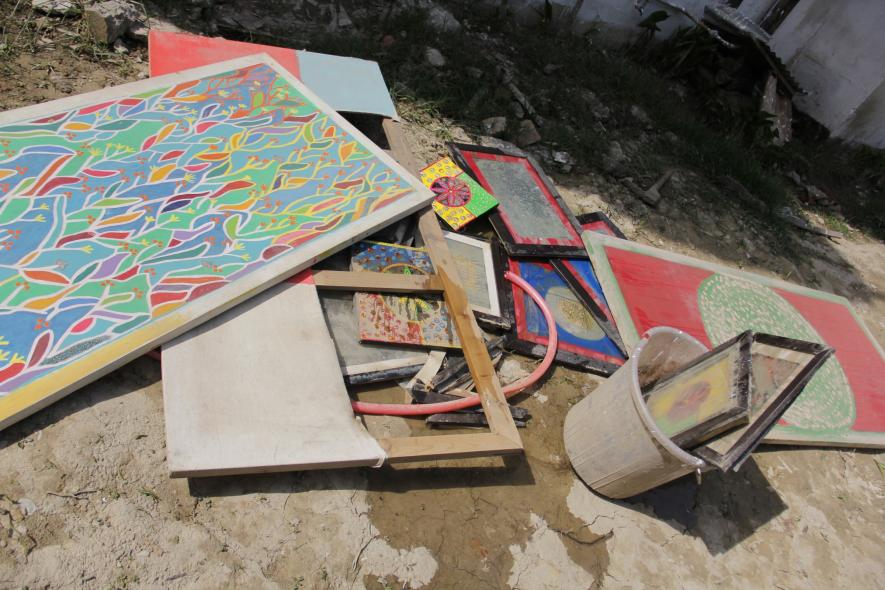
The victim of 2014 Kashmir Floods was Ruhani’s art
Syed Ruhani fled her home to fulfil her dreams – to paint and write – away from Kashmir where she grew up, away from the hilly woods of Daksum where she spent her early childhood in early 1990s. Her reminiscences from her Anantnag days are of “travelling on foot or on the horseback”, as the terrain was not suitable for motor vehicles. She gets nostalgic while recalling how her the elder sister taught her mathematics using bird feathers, as there was no school in the area.
Ruhani, a self-made multifaceted artist, now lives in Mumbai, where she feels free like she has never felt before; but the price she paid to reach the maximum city was steep. In India, millions flock to this glamourous city to give their luck a chance, some succeed while many don’t.
After coming back to home, Ruhani started painting to find solace in the realm of art.
The situation in Jammu and Kashmir remains tense because of stringent Indian policies in place to control and sometimes repress the revolts. Situation was no different when Ruhani’s family shifted to Srinagar. Ruhani once led her classmates from her elementary school to march on the streets with small flags – wanting to signify peace and brotherhood. As some shopkeepers saw the students, they took them inside their shops, to protect them from the violence that ensued between the government forces and the locals. Ruhani’s parents were summoned after the principal came to know that it was Ruhani who was leading the march.
“It was the first manifestation of our dissent,” says Ruhani. Her parents ignored this incident deeming it childish and innocent, but soon, they had to deal with an intense bout of her anger. Ruhani had raised her hand on a teacher in her school for having “humiliated” a fellow classmate for her appearance in front of the class. To “tame” Ruhani, her parents sent her to a girls’ madrasa in a remote village of Simlakh in Gujarat. However, when she was studying there, she protested against the injustice by the madrasa authority. Ruhani says that she was hit so brutally – as a result of her dissent – that she landed in a hospital. Her parents tried shifting her to some other madrasa, but she was adamant; their attempts proved futile.
“Not wearing burqa and duppata is haram (sin)… Women talking loudly is haram… Laughing is haram…What is not haram in the life of a woman?” Ruhani would wonder back then, she says. Her attitude was tomboyish, she feels, and hence, her parents were asked by the relatives to rein her in.
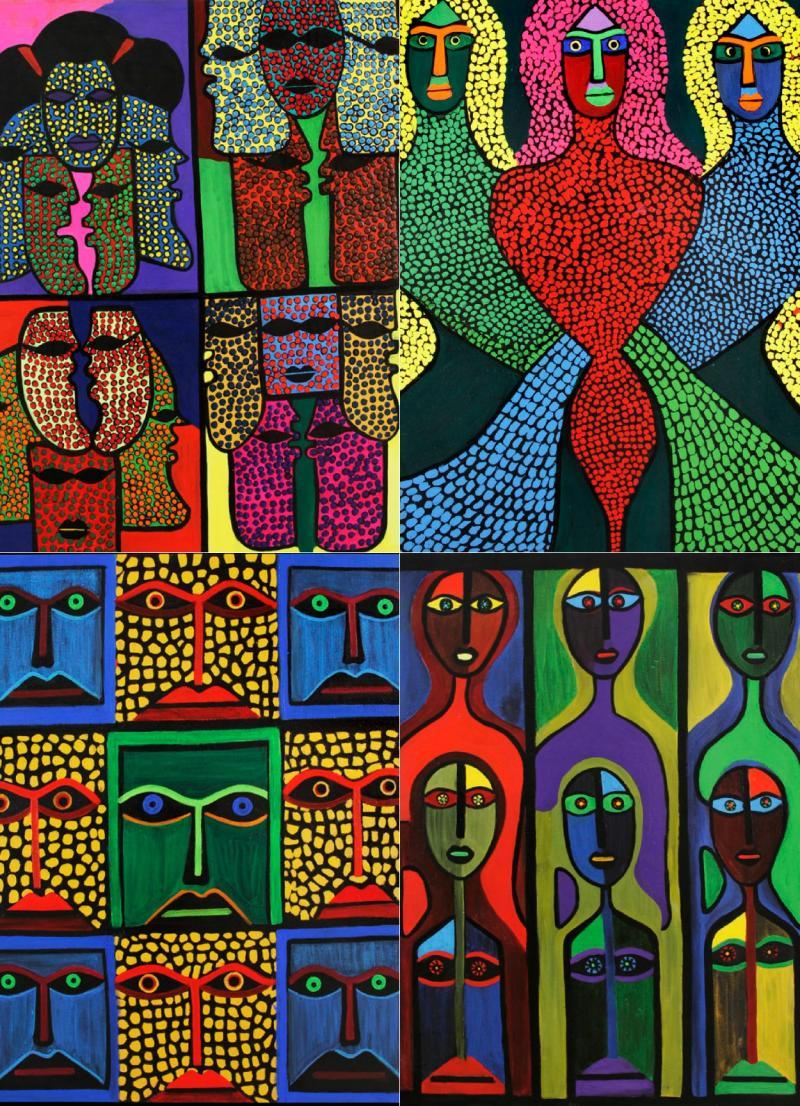
Ruhani's Painting
Frieda Kahlo, whom Ruhani greatly admires, had once said: “Feet, what do I need you for when I have wings to fly?” She feels that perhaps a feeling like this prodded her to not conform to the set of rules imposed by her parents and her society. She started eloping frequently from her home in Kashmir when she was 17 years old – sometimes for a few days, sometimes for months. This was completely unimaginable for any girl from the Valley, especially owing to the restive character of the region. “One can tolerate injustice only to a certain extent. I couldn’t do it beyond my capacity,” she says.
Ruhani had come up with a neat trick to manage her expenses for when she would be on the run. “In Pahalgam, where I stayed, women would ask me about the secret behind my beauty. That struck me. I started selling some natural paste to them for a price between Rs 100 and Rs 500. Using this money, I would manage to stay at cheap lodges in Kashmir,” she explains.
Syed felt the need to move out of the Valley to experience the real world. “I felt like I belonged there,” she says. Ruhani embarked on a journey to Delhi with just Rs 500 she had managed to save. On reaching there, she worked at a petrol pump and a pharmaceutical shop. “My experience in Delhi was horrifying. People used to stare at me. I was in a city where the form of regression was different. In Kashmir, the abuse was verbal. In Delhi, it was sexual,” she says.
“The owner of the pharmacy, who was in his mid-fifties, attempted to rape me. He gave the other workers a day off. He then locked me in the basement; I threw a chair at him as he tried to approach, and ran out of the place. I left him locked inside.”
Syed says that she could not even take the risk of informing the police, as in that case, her location could have been revealed to her parents. On a friend’s advice, she decided to go to Mumbai, as she was told that it’s a much safer city. “I was anyway surviving on glucose biscuits and tea. I thought, how worse could it get? I was ready to face new challenges, and so, I left,” she recollects.
When Ruhani came to Mumbai, she met fashion photographer Anand Seth. Seth circulated Ruhani’s profile among the fashion photographers. This opened up new avenues for her, and she took up modelling as a career. Meanwhile, her parents found out that she has been staying in Mumbai, and rushed to the city to take her back.
“I did not want to go home, and wanted to live freely as an artist. But they threatened my host with consequences if I was to stay at their place any longer. In the end, we reached a compromise. My father was ready to let me have a small painting studio on the third floor of the house. I agreed to go back,” he said.
Syed started painting and tried to find solace in the realm of art. One day, she received a call from Mumbai. She was informed that her series of acrylic on canvas, Tribal Chicc, a set of 10 paintings capturing different shades of human emotions is to be displayed in an exhibition. “It was a moment to be preserved. I sent my work to Mumbai. But then, our area was flooded [in 2014 Kashmir floods]. Our house remained partially submerged for 27 days. My work was defiled.”
After this, Ruhani’s mother, whom she considered a companion, also took a stand against Ruhani. “My mother asked me to drop this. Others were already calling it haram. They said that drawing faces is haram in Islam. And I actually got convinced. I asked the manager to send my work back and then, I burnt it all,” she says.
This episode acted as a catalyst that pushed her into mental trauma. “I was in a relationship and it failed. All of this made me believe that what I was doing was against Islam—this was the reason I was suffering,” she said.
It took Ruhani four years to recover. She has recently finished reworking on the series she had burnt. “Struggling to find my individuality – being an independent Kashmiri girl – I had to rechristen myself to avoid conflict with the dogmatic, fanatical community. The pain and anguish I have felt through the journey brought sharpness and soul into my work,” she says.
“We women don’t need support from anyone to be empowered. If everyone starts acting honestly and is true to their heart, there will be no need for an external push. We are self-sufficient to opt for the profession of our preference. Others can’t tell us what is wrong and what is right for us. I wouldn’t be wrong if I say male hegemony is the fundamental reason behind this,” feels Ruhani.
Talking about the commotion that followed the decision of Zaira Wasim to quit her acting career in Hindi cinema, Syed says, “Why are mullahs welcoming the decision of Zaira to quit cinema. I respect her decision, but I am baffled by the fact that many were against her decision to join the industry. I was also in the very dogmatic shoes once. I burnt my art. I have now overcome almost the insuperable.”
It has been a year since Ruhani has left Kashmir and is back in Mumbai, empowered like never before, with resilience not easy to split apart. She has been featured in Anand Seth's exhibition as one of 10 most admired women in the field. This followed a series of fashion spreads for glossies like Grazia, Hi living and Hi Blitz. Her artwork has been installed in malls across Srinagar, Mumbai and Delhi. Apart from being a model for Rohit Bal and Satya Paul, she also received international radio exposure with release of two of her songs – Moorakh duniya (Stupid world) and Khuda (God) – on a Tel Aviv FM channel. While Moorakh Duniya deals with the issue of sexual harassment faced by women, Khuda highlights the grim reality of social bullying.
She has also written a poem depicting her ordeals called Fish. It reads:
I fell in a trap, some human crap
One by one they were having fun
Piercing their nails, taking my scales
Watching this, my hearts wails
They call themselves men, I wonder since when.
Get the latest reports & analysis with people's perspective on Protests, movements & deep analytical videos, discussions of the current affairs in your Telegram app. Subscribe to NewsClick's Telegram channel & get Real-Time updates on stories, as they get published on our website.









